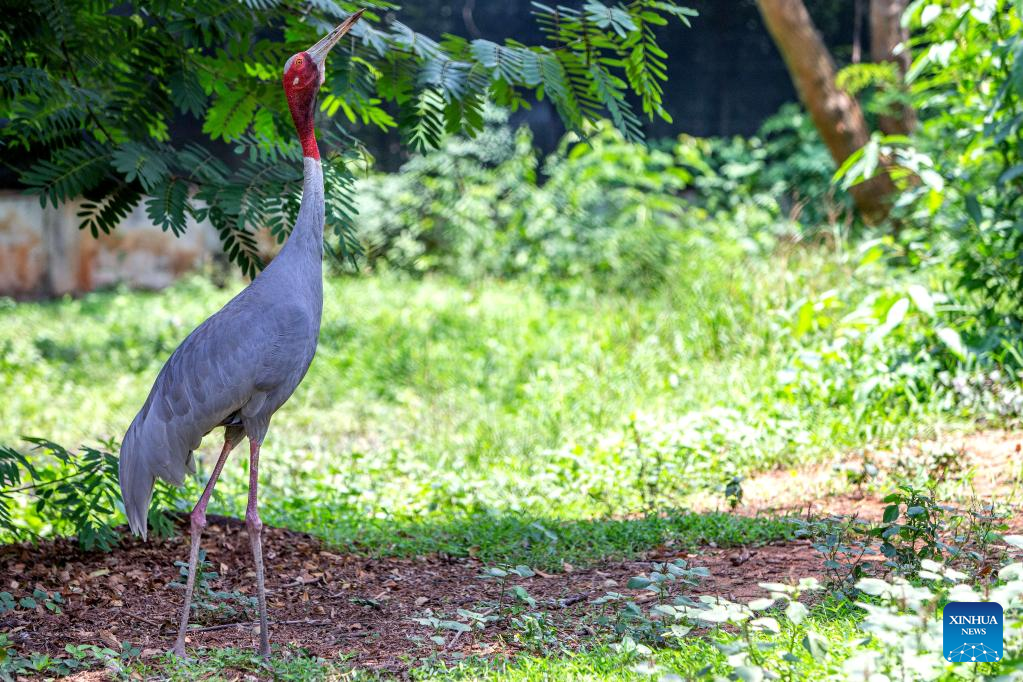
This photo taken on May 16, 2023 shows a sarus crane at the Nakhon Ratchasima Zoo in northeastern Thailand.
The Nakhon Ratchasima Zoo is the largest breeding site for the endangered cranes in Thailand.
From 2009 to 2013, the Nakhon Ratchasima Zoo began releasing sarus cranes back into the wild, and so far, 156 cranes have successfully returned.(Xinhua/Wang Teng)
BANGKOK, May 22 (Xinhua) -- Thanat Utrawiset, a 41-year-old staff member responsible for avian animals at the Nakhon Ratchasima Zoo in northeastern Thailand, has developed an inseparable bond with the rare sarus cranes in the zoo since 2010.
"When I first started working here, the wild sarus crane had already become extinct in Thailand. But now, when we combine the number of reintroduced and naturally born cranes, our wild sarus crane population has reached over a hundred," Thanat said with a contented tone.
"For the past 13 years, I have been in charge of feeding and taking care of the sarus cranes, including hand-raising the chicks born in the zoo," he added.
Established in 1990, the Nakhon Ratchasima Zoo initially received a donation of animals from the public, including the sarus crane that had been locally extinct for nearly 50 years. According to Prasert Klinhomsud, another zoo employee, some of the donated cranes were found by villagers near the Thai-Cambodian border.
In 1997, the zoo successfully hatched its first sarus crane chick, and over the next decade, the population gradually grew. The Nakhon Ratchasima Zoo has now become the largest breeding site for the endangered cranes in Thailand.
The return of the locally-extinct bird to Thailand after decades is undoubtedly fortunate. However, the Thai government and animal conservation organizations aim to create an ecological environment that not only complies with natural laws but also promotes harmonious coexistence between humans and wild animals such as the sarus crane, thus avoiding a repeat of their extinction.
Petch Manopawitr, chairperson of the Bird Conservation Society of Thailand, pointed out that the main reason for the disappearance of sarus cranes in Thailand was hunting by local villagers.
"Due to their large size and proximity to human settlements, sarus cranes were frequently hunted by local villagers. Additionally, the wetland habitats suitable for sarus crane survival underwent changes. These two factors combined led to the extinction of sarus cranes in Thailand."
To address this issue, the Bird Conservation Society collaborated with the zoo on extensive research and eventually decided to implement a project to reintroduce sarus cranes into the wild in Buriram Province. This project not only received strong support from the Zoological Park Organization of Thailand, but has also become a successful case of releasing captive-bred endangered species back to the wild.
From 2009 to 2013, the Nakhon Ratchasima Zoo began releasing sarus cranes back into the wild, and so far, 156 cranes have successfully returned. According to Thanat, approximately 70 percent of these reintroduced birds have survived, and the number of cranes born in the wild has reached nearly 50.
Adapting to the wild is not an easy task for the cranes that have grown up in captivity. "The staff first select suitable cranes for release and provide them with comprehensive training, including survival skills, adaptation skills, foraging skills and group living skills, which takes about 6 to 8 months," said Thanat.
"After passing health and adaptability tests, these young cranes are transferred to suitable release sites to acclimate to their new environment, a process that takes about 3 to 4 months."
Thanat has been involved in this project for 13 years and has been deeply impressed by the reintroduction activities. Initially, the villagers did not understand the purpose, but after years of promotion and effort, they began to realize the importance of protecting the endangered cranes and actively participated in the project.
"Now, villagers provide us with information about the cranes after their release, and they even wait until the crane eggs hatch in their fields before harvesting during the farming season," Thanat said. The presence of sarus crane elements can be seen in local sports events, cafes and markets, such as mascots, wall paintings and cartoon characters.
Petch mentioned that while the Nakhon Ratchasima Zoo carried out the reintroduction activities, the association primarily focused on coordination and promotion efforts to expand the sarus crane's habitat beyond breeding centers, allowing them to be accepted in more natural reserves.
The association staff actively communicated with local villagers to make them willing to accommodate the cranes on their lands. Meanwhile, efforts have also been made to establish a compensation mechanism to prevent conflicts between increasing crane populations and villagers, ensuring the coexistence of humans and wildlife.
"The elegant image and charm of sarus cranes serve as positive factors in raising awareness of the importance of maintaining a good relationship with them. We also hope that these efforts will promote the development of tourism and the use of villagers' lands for more environmentally friendly activities," Petch said.
It is gratifying that an increasing number of Thais are showing interest in bird conservation, and actively volunteering and providing support through donations and resources, Petch said.
Petch believed the main factors leading to the local extinction of sarus cranes, such as hunting, have been significantly reduced. Changes in laws and regulations, enhanced public awareness, and shifts in societal environment have all played positive roles. As a result, many large wetland birds have gradually returned, and their numbers and distribution areas have increased. ■
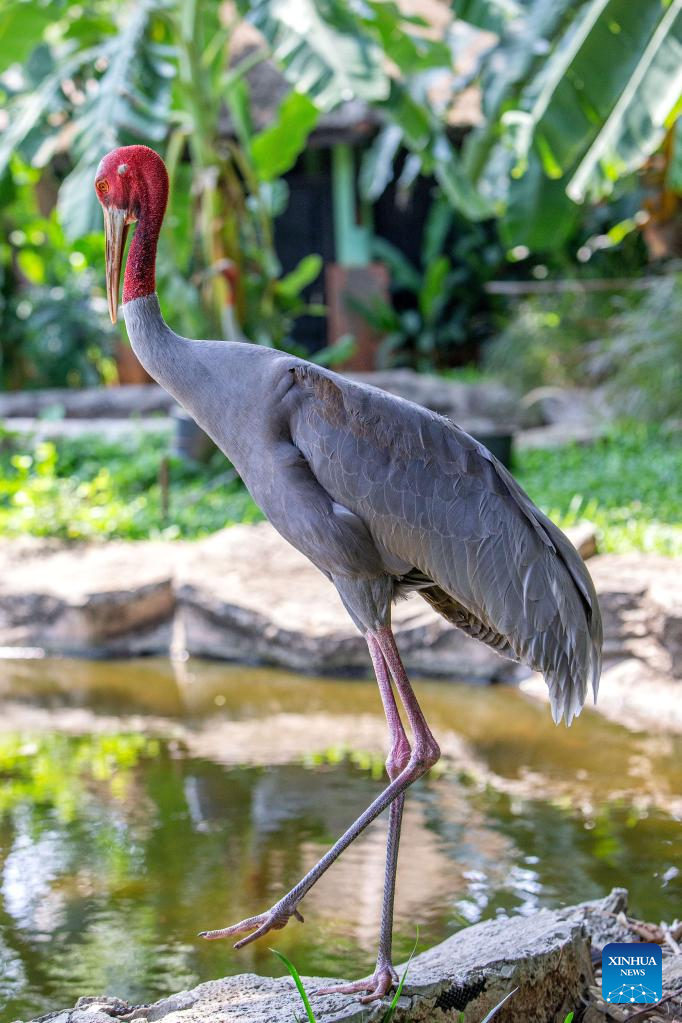
This photo taken on May 16, 2023 shows a sarus crane at the Nakhon Ratchasima Zoo in northeastern Thailand.
The Nakhon Ratchasima Zoo is the largest breeding site for the endangered cranes in Thailand.
From 2009 to 2013, the Nakhon Ratchasima Zoo began releasing sarus cranes back into the wild, and so far, 156 cranes have successfully returned.
(Xinhua/Wang Teng)
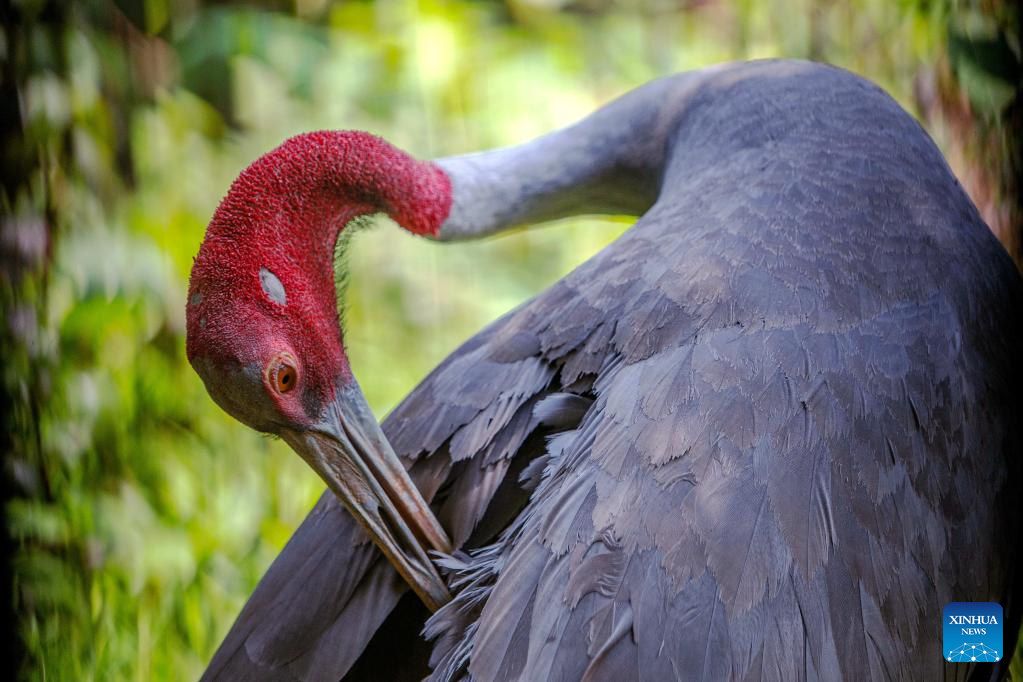
This photo taken on May 16, 2023 shows a sarus crane at the Nakhon Ratchasima Zoo in northeastern Thailand.
The Nakhon Ratchasima Zoo is the largest breeding site for the endangered cranes in Thailand.
From 2009 to 2013, the Nakhon Ratchasima Zoo began releasing sarus cranes back into the wild, and so far, 156 cranes have successfully returned.
(Xinhua/Wang Teng)
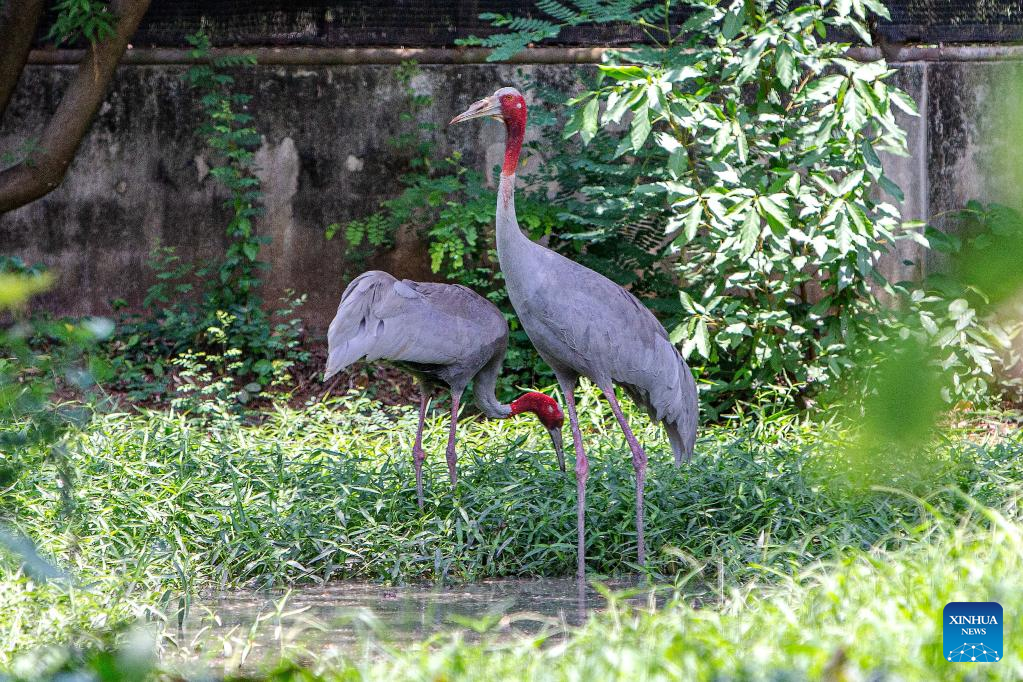
This photo taken on May 16, 2023 shows sarus cranes at the Nakhon Ratchasima Zoo in northeastern Thailand.
The Nakhon Ratchasima Zoo is the largest breeding site for the endangered cranes in Thailand.
From 2009 to 2013, the Nakhon Ratchasima Zoo began releasing sarus cranes back into the wild, and so far, 156 cranes have successfully returned.
(Xinhua/Wang Teng)
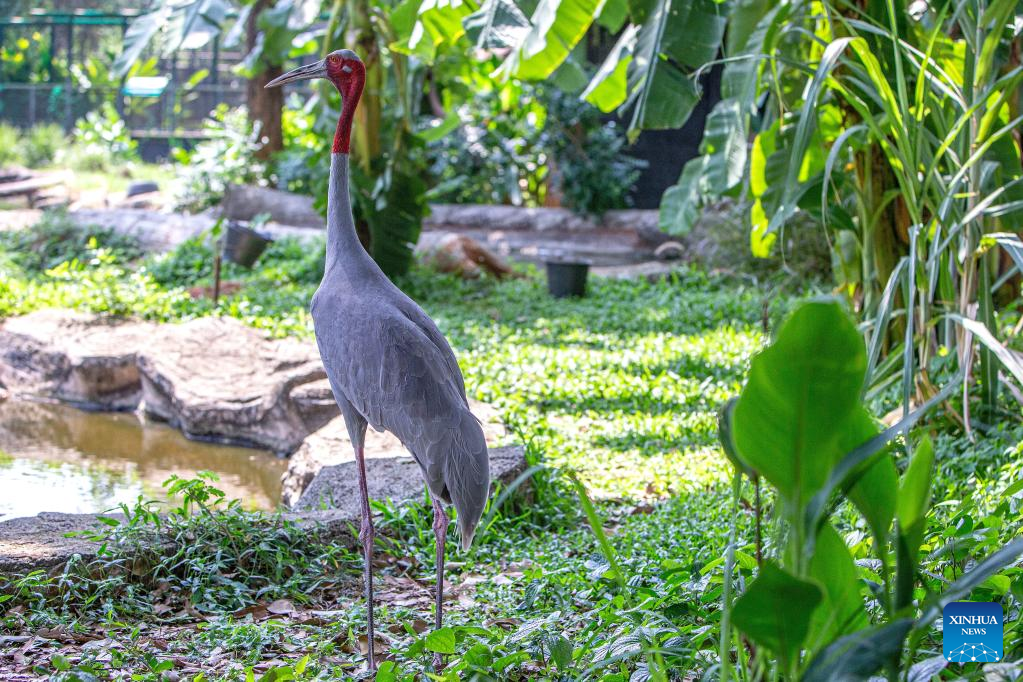
This photo taken on May 16, 2023 shows a sarus crane at the Nakhon Ratchasima Zoo in northeastern Thailand.
The Nakhon Ratchasima Zoo is the largest breeding site for the endangered cranes in Thailand.
From 2009 to 2013, the Nakhon Ratchasima Zoo began releasing sarus cranes back into the wild, and so far, 156 cranes have successfully returned.
(Xinhua/Wang Teng)
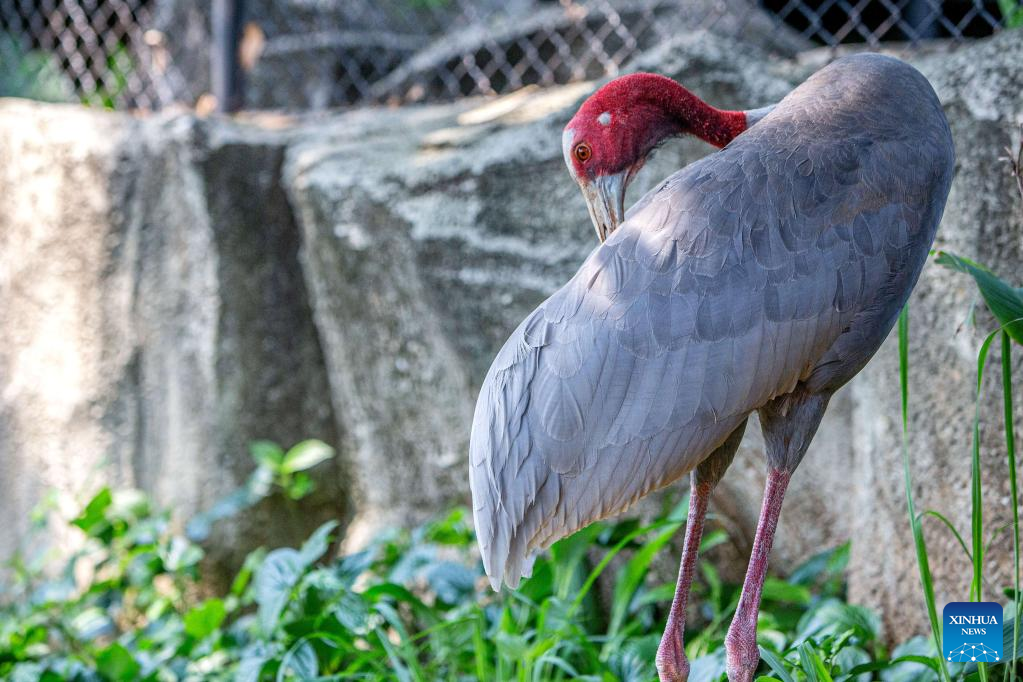
This photo taken on May 16, 2023 shows a sarus crane at the Nakhon Ratchasima Zoo in northeastern Thailand.
The Nakhon Ratchasima Zoo is the largest breeding site for the endangered cranes in Thailand.
From 2009 to 2013, the Nakhon Ratchasima Zoo began releasing sarus cranes back into the wild, and so far, 156 cranes have successfully returned.
(Xinhua/Wang Teng)



